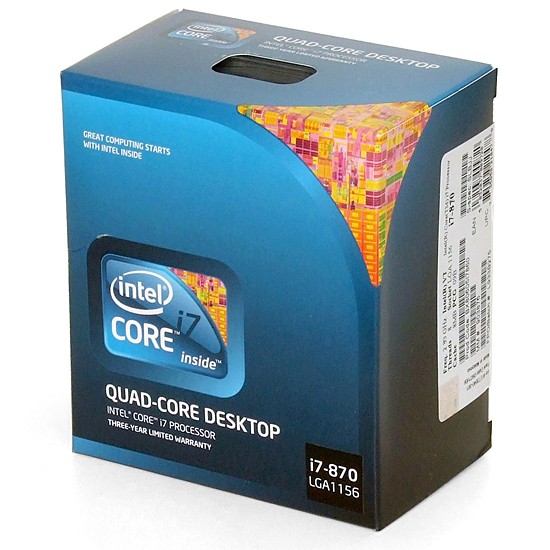PCI Express And CrossFire Scaling: Is P55 Good Enough?
The So-Called Mainstream Solution?
We hear from nearly everyone in the comments section that the LGA 1156 platform, which has 16 PCI Express (PCIe) 2.0 lanes provided by the CPU's on-board controller, is destined to be nothing more than a mainstream product for gamers using, at most, a single graphics card. A slow DMI interface linking the CPU to the P55 Express PCH at PCIe x4 bandwidth certainly doesn’t help bolster the platform’s performance credentials, causing many to question why Intel would add the Core i7-870—a $540 part—as one of only three launch-day Lynnfield processors. Certainly nobody would drop such an expensive component ontp a “mainstream” motherboard. But that was exactly the option Intel was hoping many builders would choose.
We’ve since found the Core i7-870 to be an excellent (albeit pricey) part, with clock-for-clock performance in a dead heat with LGA 1366 processors, better Intel Turbo Boost ratios, lower average power consumption, and superior overclocking of up to 4.3 GHz on air cooling. All of these great advancements cause us to ask whether the Lynnfield family of Core i5 and Core i7 CPUs might be wolves in sheep's clothing.
Is the limit of 16 PCIe lanes really that much of a hindrance? Is the performance difference between eight and 16 lanes really big enough to dismiss CrossFire from the list of the platform’s capabilities, as some have suggested? Is the x4 slot often added to $200 X58 motherboards really better than those of similarly priced P55 products?
Those are all great questions, and we begin our journey with an examination of slot performance, comparing the performance capability of x4, x8, and x16 slots on both the P55 Express platform and the X58 Express that came before it. Great pains have been made to ensure that everything else is equal throughout each test, as described in our configuration page.
Get Tom's Hardware's best news and in-depth reviews, straight to your inbox.
Current page: The So-Called Mainstream Solution?
Next Page Test Configuration-
gilbertfh I just ordered myself an ASUS P7P55D-Pro and didn't understand the difference... If I spent $1200 on video cards to go in this bad boy expecting it to test at higher performance that I will never be able to see by the naked eye it may have been a bigger deal(but it isn't).Reply -
gkay09 It is pretty logical to go the X58 route if you are planning for more than 2 cards...Reply
Only 2x HD 5970s would have significant bottleneck with x8x8 config of the P55...for rest of the cards, the x8x8 still would suffice... -
jsc For most of us, it looks like the P55 is the way to go for a gaming machine. I was a little surprised at how well two X8 channels did.Reply -
neiroatopelcc Does it make a difference for the motherboard wether or not all slots are populated when we talk energy? Each pcie plug is supposedly able to deliver 75W to the cards right? so at 3 cards that's quite a bit of power. In addition it has to deliver what, 140W? to the 4ghz cpu .... remembering an earlier article detailing failed boards because of inadequate vrm's I just have to wonder if a higher power draw on the pcie connectors would make a difference in sustainability with such an oc? I mean at some point I would assume a board can draw more power than the atx connector or the power plane can handle?Reply -
a4mula pcie 2.0 supports up to 300w (1.1 was 75w). The 5870 draws about 170w at load. This was the reason the 5970 was scaled back to 5850 speeds. Overclocked 920 @ 4.0 is going to draw about 250w. i5 750 (@ 4.0) on the other hand draws about 150w.Reply
For awhile now it's been known that the p55 will run an 8x8x crossfire within close proximity of it's x58 16x/16x even on 5870's. The only real question that hasn't been seen is the quadfire 5970's and a trifire 5970+5870. Publish that and you'll garner my attention at least. -
neiroatopelcc 300w ? but why then would new cards still ship with pcie6 and 8 connectors if the cards actually could make do with the pcie supplied power? I mean, sure for pcie1 support, but won't they still bitch if one was to not plug em in under pcie2?Reply
ps. 150W is also a lot for a processor designed for two digit numbers. Is there some kind of list somewhere of which motherboards support how much vrm power, or how many phases generate how much wattage or whatever can be used as a guideline?
Gonna upgrade the p35 to p55, and I've never been one for stock speeds... -
jennyh The gap is just going to increase with more and more powerful graphics cards. We're talking 1-2 years and 8x will be performing just like 4x is now.Reply
8x Pci-e lanes should now be considered a drawback when purchasing new hardware. -
notty22 "8x Pci-e lanes should now be considered a drawback when purchasing new hardware."Reply
They just proved it was NOT a drawback with two 400 dollar top tier gpu's.
Someone that advocates not upgrading the rest of their motherboard specs to the current high performance components such as DDR3 and the fastest hypertransport speed should not worry about THEORETICAL pci-e bandwidth. -
baracubra Yeaaaaah! I've been waiting for this article for quite a while now, this clears up a lot of speculation! I hope you guys do a follow-up article to test whether two 8x,8x are enough to support 2x 5970's....Reply
If this article had come out 2 weeks ago, I would have upgraded to an i7-870 and 2x 5870's, but now that we know Fermi is arriving in Q1 2010 I'm afraid i'm gonna have to wait. . . again -.-
Oh well, that's why we love the PC market, always advancing :)

